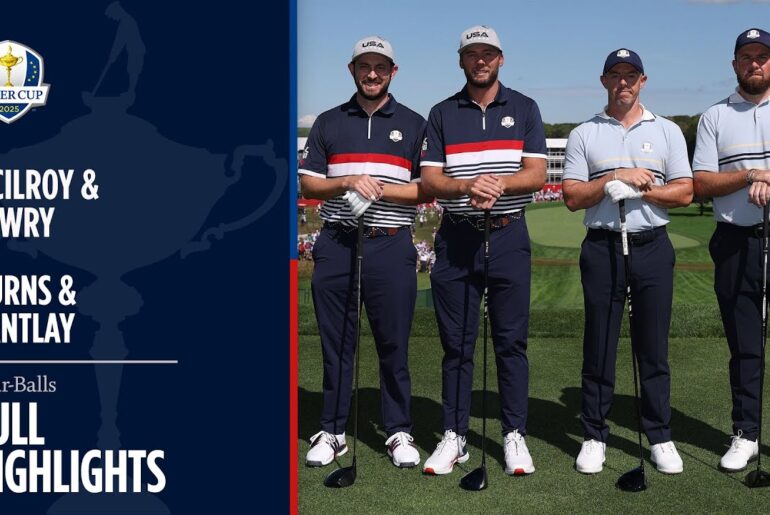Join us as we dive into the world of professional golf with Max Greyserman, a rising star on the PGA Tour. In this video, Max shares his unique journey from the Korn Ferry Tour to competing in major championships. Discover his insights on golf course strategy, the impact of analytical thinking in golf, and his experiences with PGA Tour CEO Brian Rolapp. Max also discusses the importance of decision-making in golf, the challenges of turning pro, and his thoughts on the future of the PGA Tour. Don’t miss this exclusive interview filled with valuable lessons for aspiring golfers and fans alike!
Max Gracerman PGA Tour insights, strategy, and personal journey. Max Grazerman’s journey on the PGA Tour is nothing short of inspiring. Having worked his way from conditional cornferryy tour status to guaranteed spots in all of the tours marquee events and appearances in the four major championships. He stands as a testament to perseverance and strategic thinking. Ahead of the Windom Championship, I had the privilege of speaking with Graaserman about various aspects of his career, including his unique background, strategic approach to golf, and the challenges and opportunities within the PGA Tour. Max Graaserman’s story begins with his family’s immigration from Kev to the United States. Interestingly, neither of his parents knew what golf was until they moved to America. During family vacations to Florida, they stumbled upon free golf lessons, sparking their interest. Young Max would often tag along on the golf course, eventually picking up a club himself. This casual introduction to the sport set the stage for his future success. His father’s background in finance and academia has significantly influenced Graserman’s approach to the game. Growing up with a strong foundation in math and analytical thinking, Graserman understands that golf is as much a game of strategy as it is skill. During his time at Duke, he delved deeper into the analytical aspects of golf under the guidance of Scott Faucet. This blend of mathematical precision and strategic planning has become a hallmark of his game. When discussing his approach to golf courses, Graserman emphasizes the importance of understanding the conditions. While he appreciates courses that allow for creative shotmaking, he recognizes that on the PGO tour, consistency and minimizing mistakes are paramount. For instance, Augusta Nationals firmness and slope require careful consideration of angles, particularly on holes like number 14 and number 13. The question of when aspiring professional golfers should turn pro remains a topic of debate. Graser reflects on the changing landscape of college golf, noting the influence of NIL name, image, and likelihood compensation and the PGA Tour U program. He suggests that while college provides valuable development opportunities, the accelerated learning curve of professional golf can be beneficial for some players. Graaserman’s four-year journey on the corn ferry tour was marked by highs and lows. Despite setbacks, including a wrist injury, he persevered, ultimately securing his PGA Tour card. His experiences during this period taught him invaluable lessons about resilience and competition. With Brian Rolap recently appointed as CEO of the PGA Tour, the future of the tour remains uncertain. Graaserman believes that while the tour is currently in a strong position, it must continue to evolve to attract younger viewers. Initiatives like the content creator classic, while controversial among some players, represent efforts to bridge the generational gap. Regarding the structure of the PGA Tour, Greaserman acknowledges the increasing competitiveness and shrinking fields. While he sees the rationale behind these changes, he questions their long-term impact on the tour’s diversity and accessibility. As one of the tour’s top putters, Graserman credits his success to consistent practice and a focused approach. He emphasizes the importance of speed, read, and start line in his putting routine. Reflecting on his first full season in the majors, Graserman identifies areas for improvement, particularly in ball control with mid to shorter irons. He plans to focus on these skills to enhance his performance in future major championships. When asked about underrated courses, Graaserman highlights TPC Louisiana, praising its challenging layout and pete die design. He notes that the course requires precise ball placement and shaping, making it a formidable test for even the best players. In Graaserman shares his thoughts on the controversial incident involving Matt Cooer at the Windom Championship. He recalls the confusion and darkness on the fio holes, emphasizing the unpredictable nature of golf and the importance of adapting to unexpected circumstances. In conclusion, Max Graaserman’s journey exemplifies the combination of talent, strategy, and perseverance required to succeed on the PGA Tour. As the tour continues to evolve, players like Graaserman will play a crucial role in shaping its future. What do you think about the changes in the PGA Tour structure? Should players prioritize college golf or turnpro earlier? Share your thoughts in the comments.







